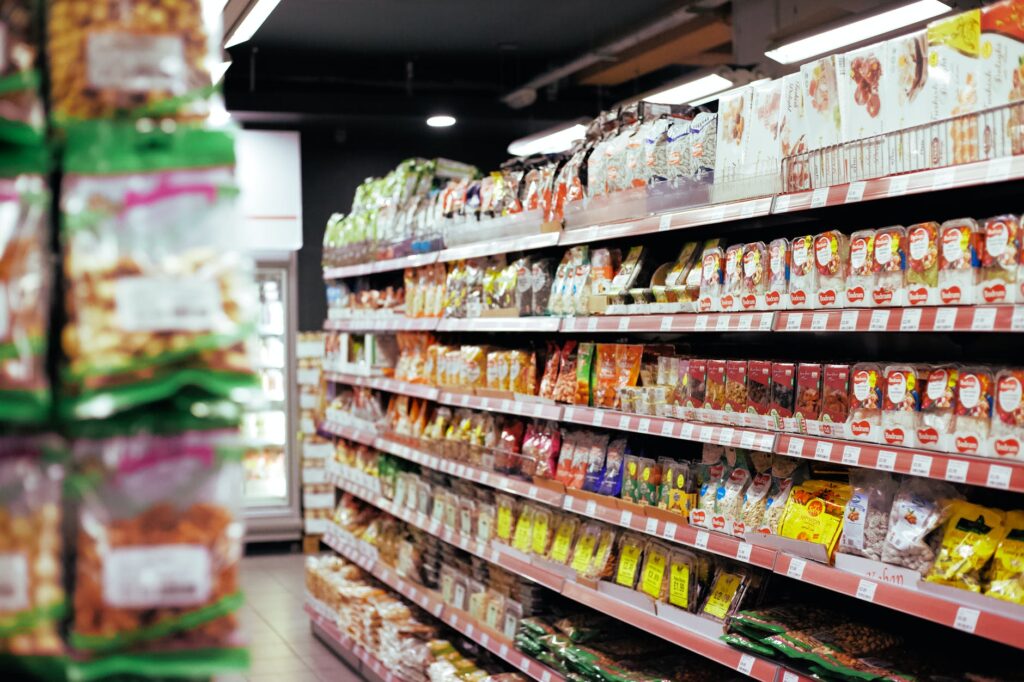Whenever folks set out on their journey toward more sustainable living, the focus invariably winds up on food and its packaging. As long as something isn’t wrapped in plastic, it’s sustainable, right? We can buy as many of those things as we like, right? Not necessarily. However, learning how to shop backward can make your personal shopping habits more sustainable, no matter what you buy.
In reality, if you dig past the surface level, you’ll find that a fair amount of the foods we eat are wildly unsustainable or unethical in some way. The complete ethical implications of the foods we eat could fill dozens of posts, but today I want to focus on one specific thing:
Reducing our personal food waste.
Individual & Systemic Accountability for Food Waste
Regardless of what we eat, we waste entirely too much of it. Food waste accounts for over 20 percent of landfill waste in the United States and not one pound of it needs to wind up there.
It’s an enormous problem, and like all enormous problems, requires both individual and systemic action to remedy. Today, I want to focus on the individual steps we can take to tackle food waste within our own homes.
Composting is a great way to keep your squishy lettuce and freezer-burned meat out of the landfill, but how do we prevent food spoilage in the first place? How do we ensure that each food product we buy gets consumed, instead of landfilled or composted?
Our solution: Backward grocery shopping.
What is backward shopping?
To put it simply, shopping backward is the process of “filling in the blanks” of your pantry each time you shop for groceries. Instead of meal planning randomly, you strategically revisit the pantry each time you make a shopping list. Then, you can plan your meals around recipes you need just a few new items to complete.
How do I shop backward?
See? Shopping backward is simple, and anyone can do it! It doesn’t matter where, how, or how often you shop. The process is simple and requires minimal extra meal planning.
If you’re a step-by-step thinker like me, I’ve broken the planning process down into two easy steps.
Step 1: Ask yourself, “What can I make with what I already have?”
First-world humans have this uncanny knack for thinking they have nothing to eat, even when the pantry is full. We accumulate foods that get shoved to the back of our cupboards and fridges until they go bad, and we wind up throwing the resulting science experiments into the trash or compost. Get into the habit of quickly inventorying all items each time you plan to shop to avoid food going bad or getting lost.
I recommend doing a large pantry and kitchen cleanout the first time you do this step. Store things in a way that makes it easy for you to see everything every time you make a shopping trip.
Once you have a good organizational system in place, it’s easy to quickly assess what recipes you already have all ingredients for.
Step 2: Fill in the blanks
Once you’ve determined what you can already make, take into account what you can almost make. Are there any leftovers that could easily be whipped up into something else? Any straggler pasta boxes lying around that could make a quick and easy dish?
Example: Last week, we had a semi-squishy tomato leftover from this year’s garden and half of a chicken breast from a previous meal. We bought a pizza crust and whipped up a simple chicken pizza with these straggler leftovers and a can of sauce that was hanging out in the back of the pantry. it was delicious, and it used up some other foods we had lying around that weren’t likely to get eaten on their own.
How is this different than meal planning?
Shopping backward is meal planning….but backward! The only difference is that you meal plan around your ingredients, instead of shopping around your meal plan.
Does it Actually Make a Difference?
Yes! You might not notice right away, but over time your grocery bills are likely to become significantly reduced. Particularly if you combine shopping backward with other sustainable efforts like growing herbs and produce at home, or reducing meat consumption.
Practice, Practice, Practice
Today, we encourage you to make your next shopping trip a little differently. Be intentional about using the ingredients you have, and let this new shopping process become a habit. Like all sustainable steps, it takes practice and patience to see the results, but once you realize the benefits, there’s no going back!

